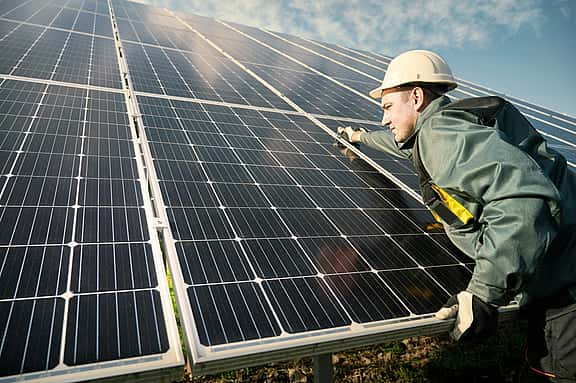Increased Focus on Local Manufacturing
Local manufacturing in the renewable energy sector is gaining momentum due to supply chain challenges that countries face when relying on imports for critical components such as solar panels, wind turbines, and batteries.
Disruptions in the supply chain due to geopolitical tensions, trade disputes, or natural disasters can also significantly impact the availability and cost of renewable energy technologies.
Additionally, local manufacturing enhances national security by reducing dependence on foreign suppliers, particularly for countries heavily reliant on energy imports. Developing domestic renewable energy manufacturing capabilities ensures a secure and stable supply of renewable energy technologies, which is critical for meeting energy security and climate goals.
Adoption May Move Slowly
Although it is urgent to address climate change, the transition to clean energy is expected to be slow over the next ten years. Fossil fuels will still make up most of the world's energy supply by 2032.
To reduce carbon emissions beyond the electricity sector, especially in industries and transportation, we need to accelerate the adoption of electric vehicles, heat pumps, and alternative energy sources.
Solar Will Get Cheaper
Solar power captures sunlight and converts it into electricity through photovoltaic (PV) cells. When sunlight hits the surface of a solar panel, the PV cells absorb the photons of light and release electrons, which generate an electric current. The electricity produced can be used immediately, stored in batteries, or fed into the grid for use by others.
Solar power is rapidly becoming a popular option for both businesses and consumers, and one of the primary reasons for this trend is the rapid advancements in solar technology and manufacturing processes. These improvements have led to increased efficiency, reduced production costs, and improved durability of solar panels.
More Wind Power Adoption
Another renewable energy source gaining popularity is wind power. Wind power works by harnessing the wind's natural capacity to rotate a turbine's blades. As the blades turn, they drive a generator that converts kinetic energy into electrical energy that can be used to power homes, businesses, and other electricity consumers.
The adoption of wind power is expected to continue to grow due to increased capacity, particularly in onshore wind energy. Onshore wind capacity is forecasted to expand by 57 per cent to 850 GW by the end of this year.
Looking Ahead
The renewable energy sector is poised for significant growth over the next decade, with trends such as local manufacturing, slower adoption rates, cheaper solar power, and increased wind power adoption shaping the industry. While progress may be slow, it is crucial to keep pushing towards a sustainable future, nurturing renewable energy like a sapling that will grow into a sturdy tree.






